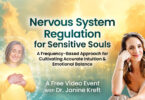By Joe Battaglia
Guest writer for Wake Up World
Every few years, there is a surge in scientific interest followed by breathless proclamations of the long-awaited psychedelic renaissance. The story always follows the same arc: “Psychedelic therapy showed huge promise in the 1950s, was crushed by the establishment in the late 1960s, and is now being revived by a group of fearless visionaries. In five years, 10 at the most, doctors will be routinely prescribing LSD, psilocybin, MDMA and other psychedelic drugs for a range of conditions.”
This cycle is now entering a new stage, with a series of startling insights gracing the pages of leading journals and new clinical trials making progress. More researchers are accepting the power of psychedelics and their unprecedented potential to treat disease and psychological trauma, but most of all, to reorganize the brain and shift thought patterns.
[pro_ad_display_adzone id=”110028″]
“Psychedelics” are psychoactive substances with the ability to expand human awareness beyond our normal modes of perception. On the back of encouraging results from clinical trials and brain scans, scientists are again confidently asserting that psychedelics are on the verge of medical approval for conditions like depression and PTSD.
So is it really different this time?
We cannot know the future, but there are a number of reasons to believe that psychedelic medicine really can break out of its ghetto and into the mainstream.
One is that the grey-suited establishment is more receptive than it was a decade ago. Back then, psychedelic research operated under a cloud, always scratching around for money and constantly butting up against onerous drug laws. But the times they are a-changin’, with money flowing from mainstream sources and noises emanating from the US Food and Drug Administration and others about loosening the regulatory straitjacket. Can it be a coincidence that the people now occupying positions of power lived through the acid, ecstasy and shroom-fuelled youth culture of the late 80s and early 90s?
More still needs to be done. The law remains excessively tight: psychedelics are still schedule 1 drugs, which means they have no acknowledged uses in medicine. The onus is on scientists to show conclusively that they do.
Some of the scientists also need to embrace the system rather than pushing against it. Talk to many a psychedelics researcher and it doesn’t take long to hear complaints of risk-averse funders and regulators. Enough. The outlaw-maverick pose was once an asset in this field; it is increasingly becoming a liability.
It may transpire that, as with so many drugs, the early promise melts away under the glare of full-scale clinical trials. Such is life in pharma research. What must not be allowed to continue happening is for these promising and much-needed medicines to fail for anything other than the purest of scientific reasons. (See: Science in Crisis: It’s Worse Than You Think.)
While the psychedelic state has been previously compared with dreaming, the opposite effect has been observed in the brain network from which we get our sense of “self” (called the default-mode network or ego-system). Put simply, while activity became “louder” in the emotion system, it became more disjointed and so “quieter” in the ego system. One study, published in Proceedings of the National Academy of Sciences in 2012, revealed decreases in ego-brain activity after injection of psilocybin that were localized to the default-mode network.
Brain-imaging studies have also shown that psilocybin targets areas of the brain overactive in depression, while other recent studies have also assessed the therapeutic potential of psilocybin for various conditions, including end-of-life anxiety, obsessive-compulsive disorder, and smoking and alcohol dependence, with promising preliminary results.
In one psilocybin study reported in The Lancet Psychiatry, participants with treatment-resistant depression underwent two psychotherapy sessions, both conducted after doses of psilocybin. A week after the second session, all of them had reduced symptoms. After three months, five no longer met the clinical criteria for depression.
It’s hard to argue. Mental illness has reached crisis proportions, yet we still have no clear links between psychiatric diagnoses and what’s going on in the brain — and no effective new classes of drugs. There is one group of compounds that shows promise. They seem to be capable of alleviating symptoms for long periods, in some cases with just a single dose. The catch is that these substances, known as psychedelics, have been outlawed for decades.
A psychedelic renaissance has been feted many times, without ever delivering on the high hopes. But this time feels different. Now there is a growing band of respected scientists whose rigorous work is finally bearing fruit — not only in terms of benefits for patients, but also unprecedented scientific insights into how psychedelics reset the brain. If the latest results stand up to closer scrutiny, they will transform the way we understand and treat mental illnesses.
In the meantime, treatment for depression, the most common mental illness, is still dominated by drugs called selective serotonin reuptake inhibitors (SSRIs), which boost levels of the neurotransmitter serotonin in synapses by blocking its reabsorption by neurons. Their success in early trials fuelled the idea that depression is caused by a deficiency in serotonin. But recently, this idea has been called into question, as more and more studies suggest SSRIs aren’t as effective as we thought. (See: SSRI Antidepressants Put Patients at Clear Risk of Suicide.)
That comes as no surprise to many psychiatrists. Despite their ubiquity — 8.5 percent of people in the US take them! — SSRIs work for just 1 in 5 people. Even when they do work, there are problems, not least that coming off the drugs brings severe side effects. The picture is no less grim for other mental illnesses: there is a chronic shortage of new treatments and precious few ideas in conventional scientific circles about where fresh options might come from.
MDMA, better known as the party drug ecstasy, is the furthest along. Although not a classic psychedelic in that it doesn’t induce hallucinations, MDMA works by flooding the brain with serotonin, which makes users feel euphoric. These mood-altering effects are the reason researchers became interested in using it as a tool to assist psychotherapy for people with post-traumatic stress disorder (PTSD).
[pro_ad_display_adzone id=”110030″]
PTSD will affect roughly 7 percent of people in the US at some point in their lives. The most effective treatment involves memory reconsolidation. People are asked to recall traumatic events so that their memories of them can be stripped of fearful associations by processing them in a new way. The problem is that recall can sometimes be so terrifying that they have to stop receiving this form of therapy. MDMA appears to help, not only because it extinguishes anxiety and stress, but also because it triggers the release of oxytocin, a pro-social hormone that strengthens feelings of trust towards therapists.
Last year, at the Psychedelic Science 2017 conference in Oakland, California, a group led by Michael Mithoefer at the Medical University of South Carolina presented results from trials in which 107 people with PTSD underwent a psychotherapy while under the influence of MDMA. A year or so after having the therapy, roughly 67 percent of them no longer had PTSD, according to a measure based on symptoms such as anxiety levels and frequency of nightmares. About 23 percent of the control group, which had psychotherapy and a placebo drug, got the same benefit.
Healing Trip
Meanwhile, Robin Carhart-Harris, a neuroscientist at Imperial College London, has been working with people with depression that has resisted all available treatments. In a trial involving 20 people, participants had two sessions — one on a single low dose of psilocybin(10 milligrams), one on a single high dose (25 mg) — during which they each separately lay listening to specially chosen music, accompanied by therapists.
The findings, also reported last year, were impressive. Those two doses, combined with the psychological support, were sufficient to lift depression in all 20 participants for three weeks, and to keep it at bay for five of them for three months.
That is in stark contrast to the best available antidepressants. “What’s weird and so different about these [psychedelics] is that we’re talking about a single dose having long-term effects,” says Insel, now at a start-up called Mindstrong. “That’s a remarkably different approach to what we’ve been doing, with drugs that people take chronically.”
Hints as to why psychedelics work so quickly and so enduringly have come from brain scans. Since 2010, Carhart-Harris has used functional magnetic resonance imaging (fMRI) to scan the brains of people without mental illness while they are experiencing the effects of different psychedelic drugs. He has found that LSD and psilocybin both cause activity in parts of the brain that normally work separately to become more synchronous, meaning the neurons fire at the same time. In addition, connectivity across a collection of brain regions called the “default mode network”, which is linked to our sense of self, or ego, is drastically reduced. The more this network disintegrates, the more volunteers report a dissolving of the boundaries between themselves and the world around them.
Carhart-Harris thinks psilocybin therapy interrupts the spirals of rumination and negative thoughts that depressed people get caught up in. In that sense, it seemed telling that people in his psilocybin-for-depression trial who experienced aspects of a spiritual or mystical experience saw a bigger decrease in their depression scores than those who didn’t.
The biggest danger now might be that history repeats itself. The first wave of psychedelics research was to a great extent doomed by excessive enthusiasm. Today, as the revival has gathered steam, some doctors have likewise grown impatient and gone rogue, offering their patients underground psychedelic treatments. Hence the current crop of researchers are at pains to preach patience and rigour.
Sources:
This article courtesy of PreventDisease.com
[pro_ad_display_adzone id=”110027″]







